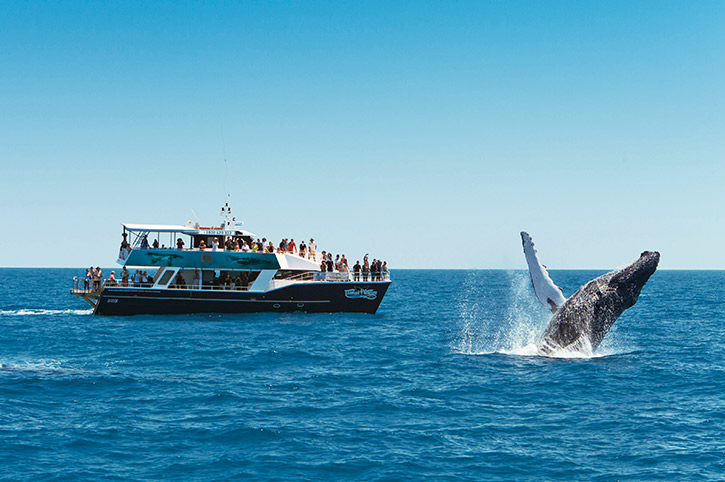
Australia is famous for its adorable marsupials, but it also has a broad spectrum of marine life, birds, and terrestrial animals. A vacation to Australia offers a variety of natural encounters, but the opportunity to observe whales is the most majestic. The continent is full of waterways abounding with marine life, with whales frequenting practically every nation’s coastline. However, since whales are migratory species, the time of year you go to Australia will alter the sorts of whales you witness. Furthermore, to increase your likelihood of a good cruise and assist you in deciding when to visit, here are a few things you must note about whale watch Australia.
Things to Know About the Whale Watch Excursion
To enjoy watching beautiful marine life, be updated on what to know to avoid accidents and damage.
See Whales and Dolphins
The whale watch Australia trips guarantee that you will see a whale throughout your voyage. However, they refrain from saying what kind of encounter it will be. You can see several hazy puffs, or you might face a blowhole with a massive marine creature in a spectacular, life-affirming event. See the best, but keep your anticipations in check; those daring photographs of breaching whales are primarily of humpbacks that are frequently observed in the summer. You will witness dolphins, occasionally thousands or hundreds of dolphins, and some white-sided dolphins and bottlenose dolphins, leaping alongside the boat.
Layer Up and Shed Layers
Expect it to be at least 10 degrees colder and windier on the open ocean. This is because whenever it pertains to weather patience, individuals opt to be weak, so dress as though it will be even 10 degrees cooler. On the other side, all of that reflected water may create something warm in the summer, so wear coatings and shield yourself from the sunlight with anything that won’t go overboard. Lastly, remember that depending on where you look, you may get some drizzle from the waves, particularly in smaller boats. Be ready to get wet.
How Do Whales Sleep
Sleep is essential for dolphins and whales to thrive. Individuals are unwilling breathers since our brainstem controls our breathing automatically. However, whales are voluntary breathers, which means they should deliberate about every breath. How whales sleep is a fascinating fact that sets them apart from other mammals. When they fall asleep, their brain will relax, but they will drown since their brain will not tell them to breathe. Whales sleep by shutting off half of their brain at a time. They may continue to live and be aware of their environment since they are somewhat awake.
Make Sure to Arrive Early
Because the winds kick up in the afternoon, the ocean waters are more relaxed in the morning. Try choosing an early trip when two or three hours on a swaying ship makes you sick. When discovering whales, one time of day is only sometimes preferable to another. However, following cruises benefitted from setting sail and knowing where previous ones had observed whales.
It All Comes Down to Migrations
Grey whales are swimming as you complain about your journey through the hill. Throughout the summer, the focus shifts to the awe-inspiring blue whale. Despite being endangered, one of the most robust groups of blue whales visits our beaches from June to September.
Unluckily, two of the most thrilling experiences are also the most uncommon. In November and January, pods of orcas have been sighted hunting or playing. Meanwhile, humpback whales have been seen to breach and lobtail their way as late as October.
Remember to Monitor the Traffic
You understand the 405 must be clear if you get on the road by 2 p.m., but it’s still worth monitoring traffic. The same is true for whales. The Aquarium of the Pacific blogs about significant activity, while most tour operators maintain a daily diary of sightings. All these firms wish you to purchase a ticket for one of their trips, so consider the figures as a guideline rather than a guarantee.
Choose the Correct Season
During the winter, humpback whales move to less predatory seas to reproduce. Humpback whales depart their breeding settings in the spring and travel continuously for 6-8 weeks, arriving in April and May. According to recent statistics, the peak humpback whale watch Australia season is from May through July. People encounter humpback whales outside of this peak season since their journey is more spread out. Furthermore, several humpbacks don’t migrate and may be spotted in the region all year.
Be Patient
Whales are typically unpredictable; however, if you understand a specific whale’s behaviour, you can better forecast its next action. The humpback whales we encounter have a moderate downtime of 3-8 minutes, so patience is required. Whenever you opt to return to the cabin, the whales frequently appear again. Take note of the whale’s travel order whenever you last caught it, and keep an eye out for it in that direction. The skipper will manoeuvre the boat so that every side of the boat has the finest views possible, so picking a viewing spot and remaining there will pay dividends. The board naturalists and skippers will also contribute by predicting where the whale will appear next.
In Summary
As you can see, Australia is an excellent location for whale viewing. Whether you whale-watch Australia, the killer whales from remote beaches, observe the migration, or watch a Humpback break the surface from a boat, there are several chances to see these majestic creatures from every coast. However, you may seek additional activities in the water and on land.


